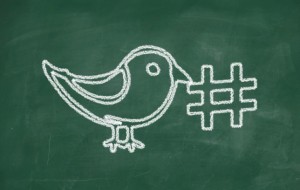You check it.
 50 times a day—usually between events or during break—and use it to follow everyone from your best friends to your favorite gymnasts (and I hope you follow me @tretrosi and @gym_momentum). But how much do you really know about Twitter, and the people behind it?
50 times a day—usually between events or during break—and use it to follow everyone from your best friends to your favorite gymnasts (and I hope you follow me @tretrosi and @gym_momentum). But how much do you really know about Twitter, and the people behind it?
At the SXSW conference in Austin earlier this month, Kevin Weil, Twitter’s Vice President of Product, Revenue, revealed the surprising reasons his company has been so successful—and what you can learn from Twitter’s big ideas.
1. The company follows a secret code …
… but Weil will reveal it anyway. “We think there are really four things that make Twitter unique: that it’s public, live, conversational, and widely distributed,” he says. “Everything we’re doing now and in the future is in service of those things.” Recent examples include showing photos and videos in timelines—rather than users having to click to see the images—and introducing Vine last year. “Vine is a great example of those four things applied to video—people sharing their lives and their creativity in 6-second loops—and it’s almost become its own sort of art form. We love what we’re seeing there.”
2. The brains behind the brand break a sweat together.
Twitter seems to roll out new features at lightning-speed—which makes sense, since its HQ is made up of highly active athletes. Weil, for example, usually runs 8 to 12 miles in the morning—often with his coworkers. “My morning run is an opportunity to connect with friends and colleagues, or if I’m alone, it’s an opportunity to collect my thoughts and plan for the day,” he says. “Running gives me balance, and leaves me with energy and enthusiasm for the coming day in the office. Twitter is a wonderful place to work, and extremely high-energy. Being a long-distance runner helps me keep up with my coworkers!”
3. They strive to stay head of the tech curve.
Weil has a big prediction for where technology is headed: “I think we will see various forms of Internet-connected devices and sensors become so prevalent that they fade into the background of everyday life,” he says. “Cell phones already have, and the world is massively different than just 7 years ago because we each carry in our pockets an always-on connection to the rest of the world. Wearables are another example of this, and they’re clearly in their infancy. I can’t wait to have more real-time information about myself, my health, and my fitness from wearables. I’m looking forward to what the future holds.”
4. They can’t function without collaboration.
Weil’s favorite business motto: “Strong opinions, weakly held.” In other words, Twitter rose to be one of the most popular services around because the company valued collaboration. “We work every day to create new experiences for hundreds of millions of users, and it’s important to be bold, to be willing to suggest and defend big ideas,” Weil says. “But it’s equally important to have the humility to ask questions, to welcome others challenging your ideas, to look honestly at data whether it supports or refutes your idea, and ultimately to learn from our users.”
I personally started viewing Twitter and other Social Media at first like at novelty. But now it is an integral part of my marketing plan. Marketing, like gymnastics, is a dynamic environment. You are moving forward or backward. There is no such thing as staying the same.
I recently was asked to MC the University of Calgary International Cup. The FIRST thing I did was start using a hashtag (#UCIC) to encourage the audience and the athletes to get involved before, during and after the competition. I look forward to growing this at future competition.
How do you use Twitter?
What has been your most successful post on social media?
Share your thoughts, keep the momentum going!




